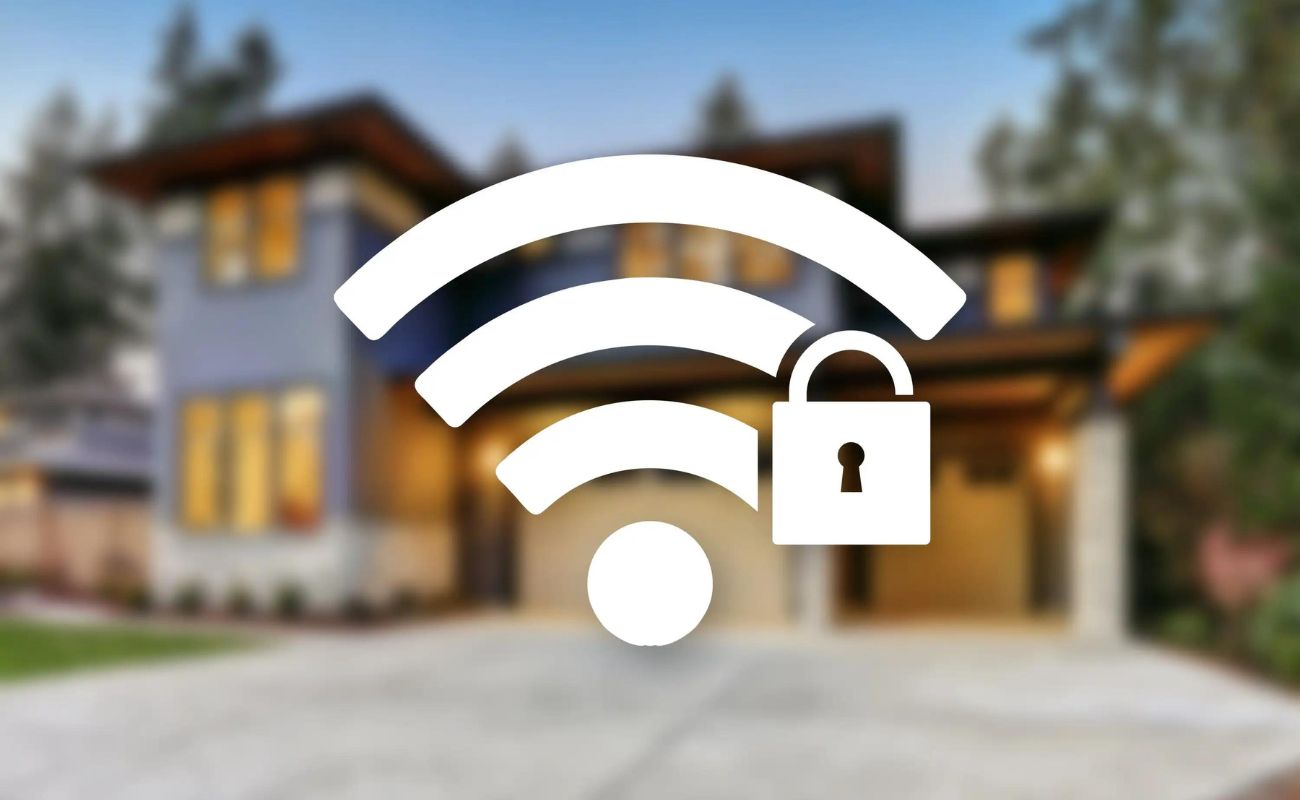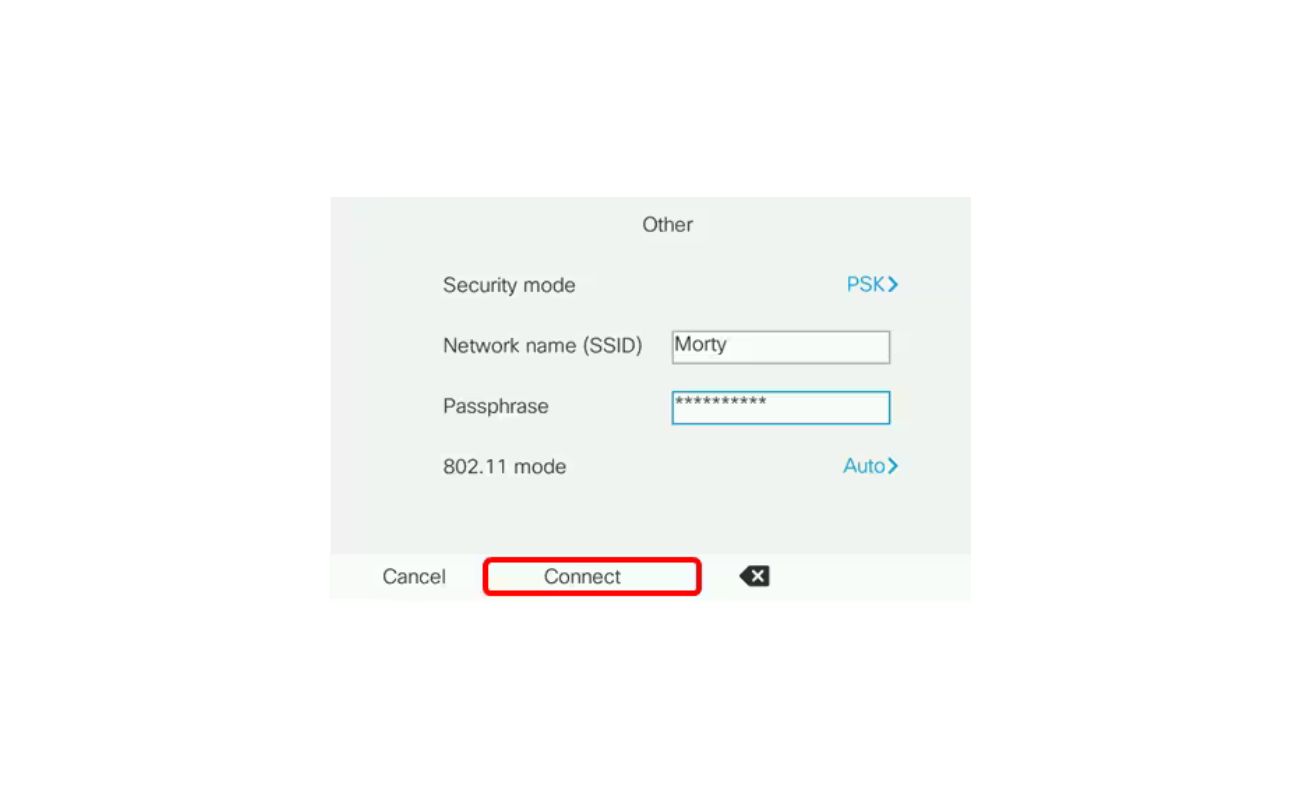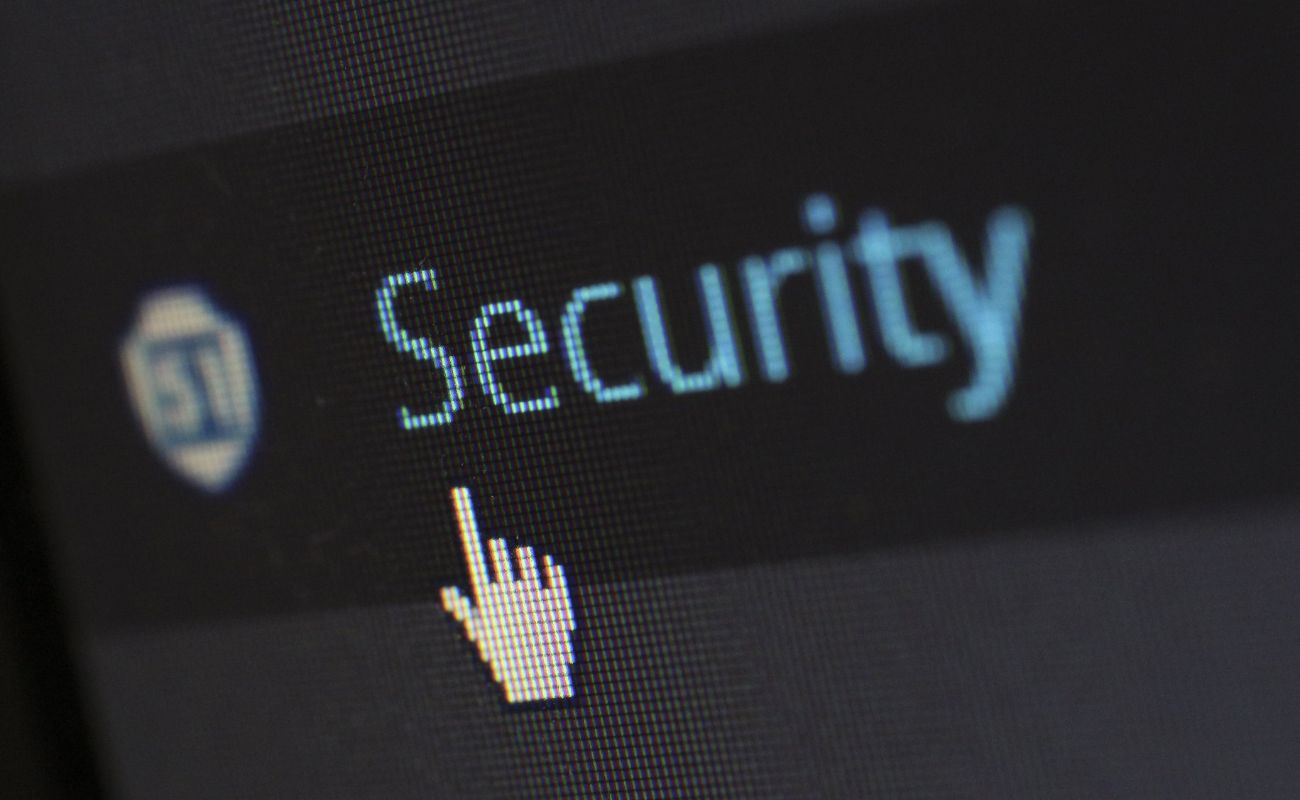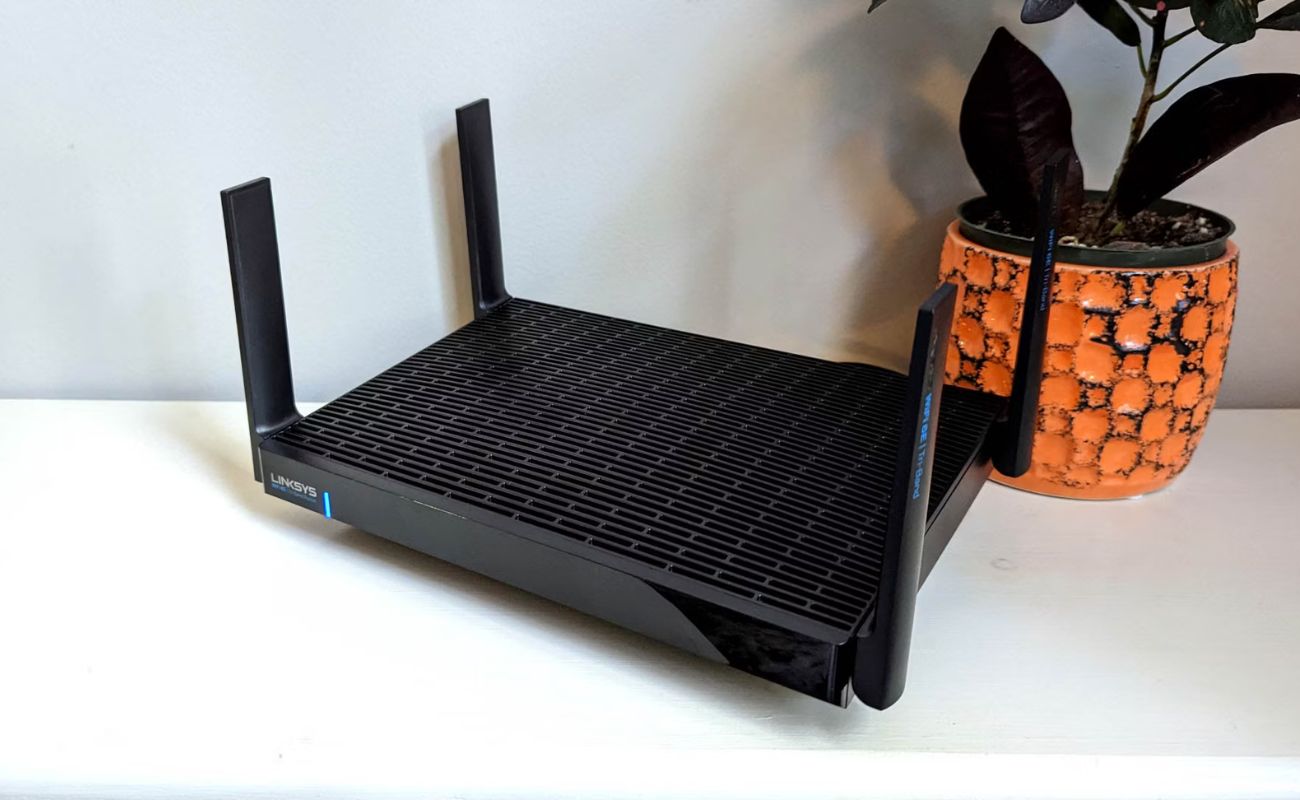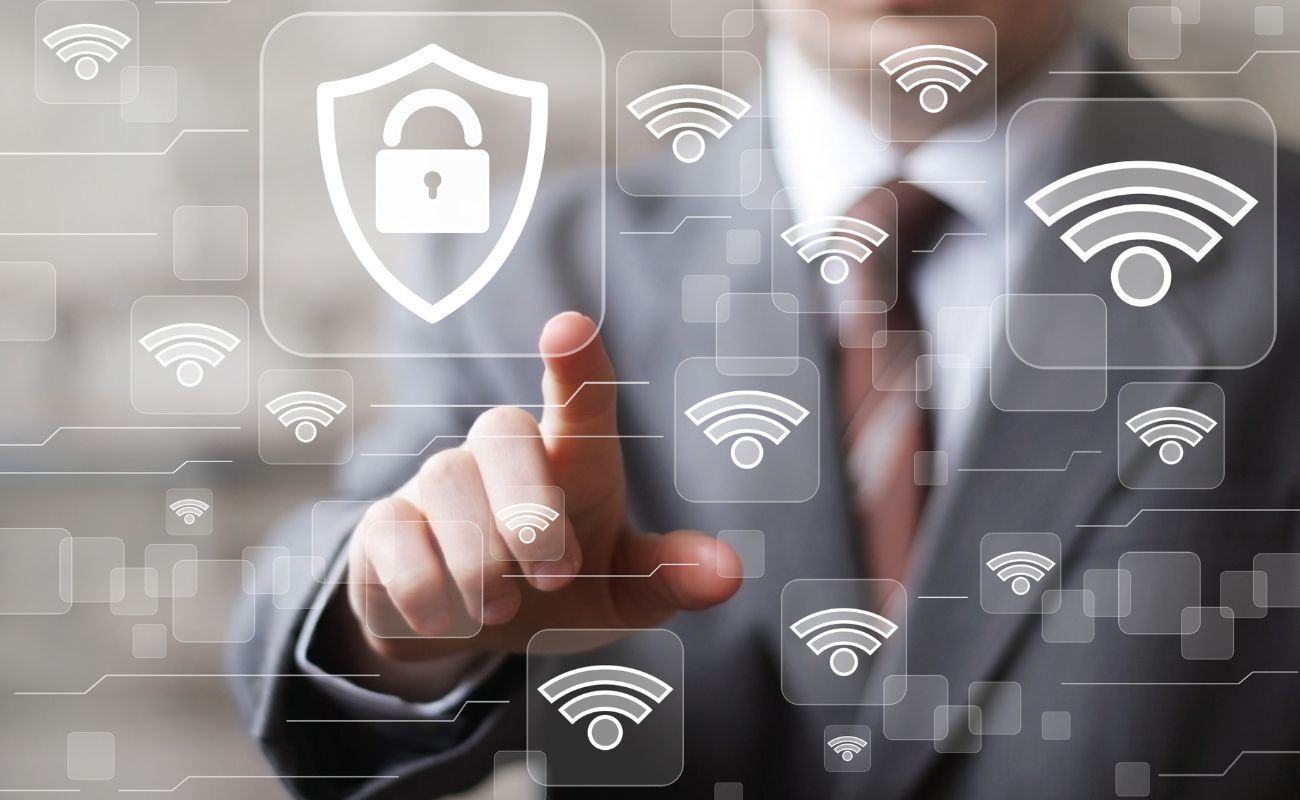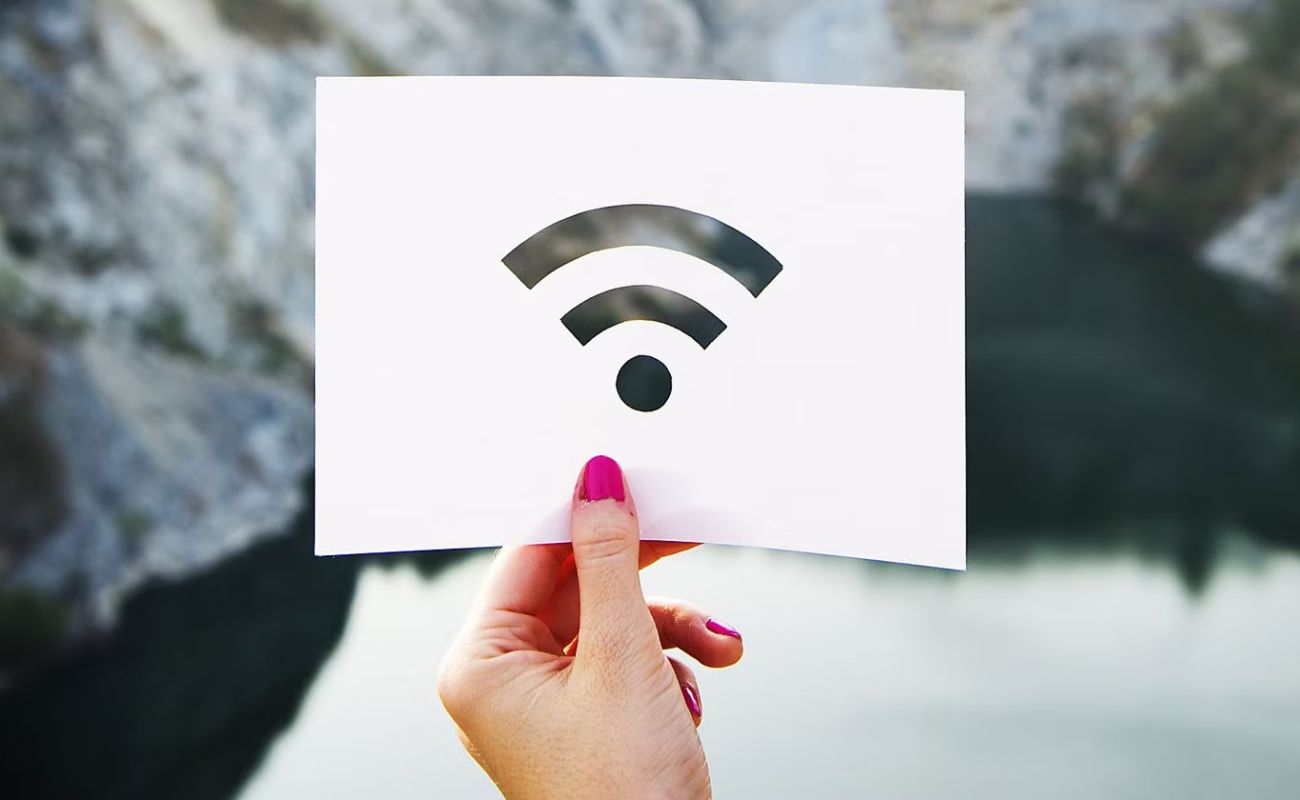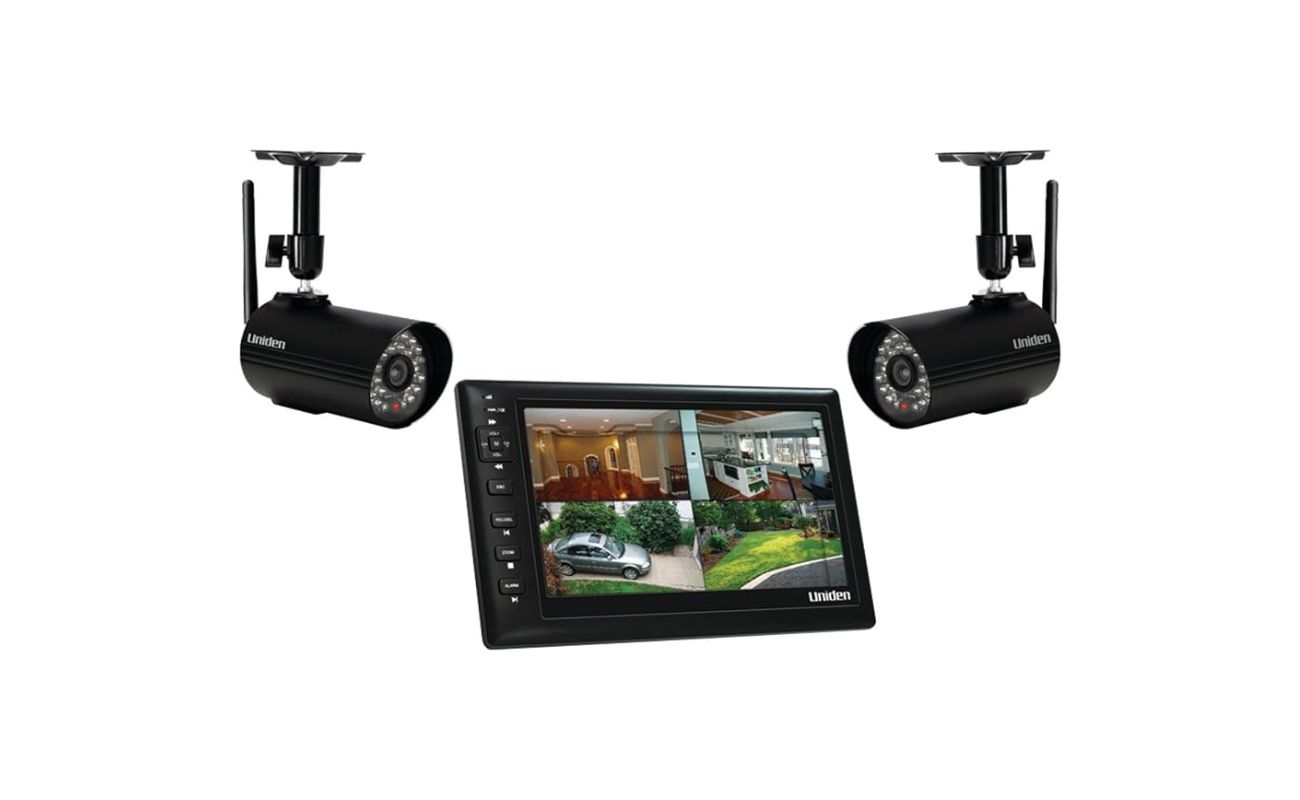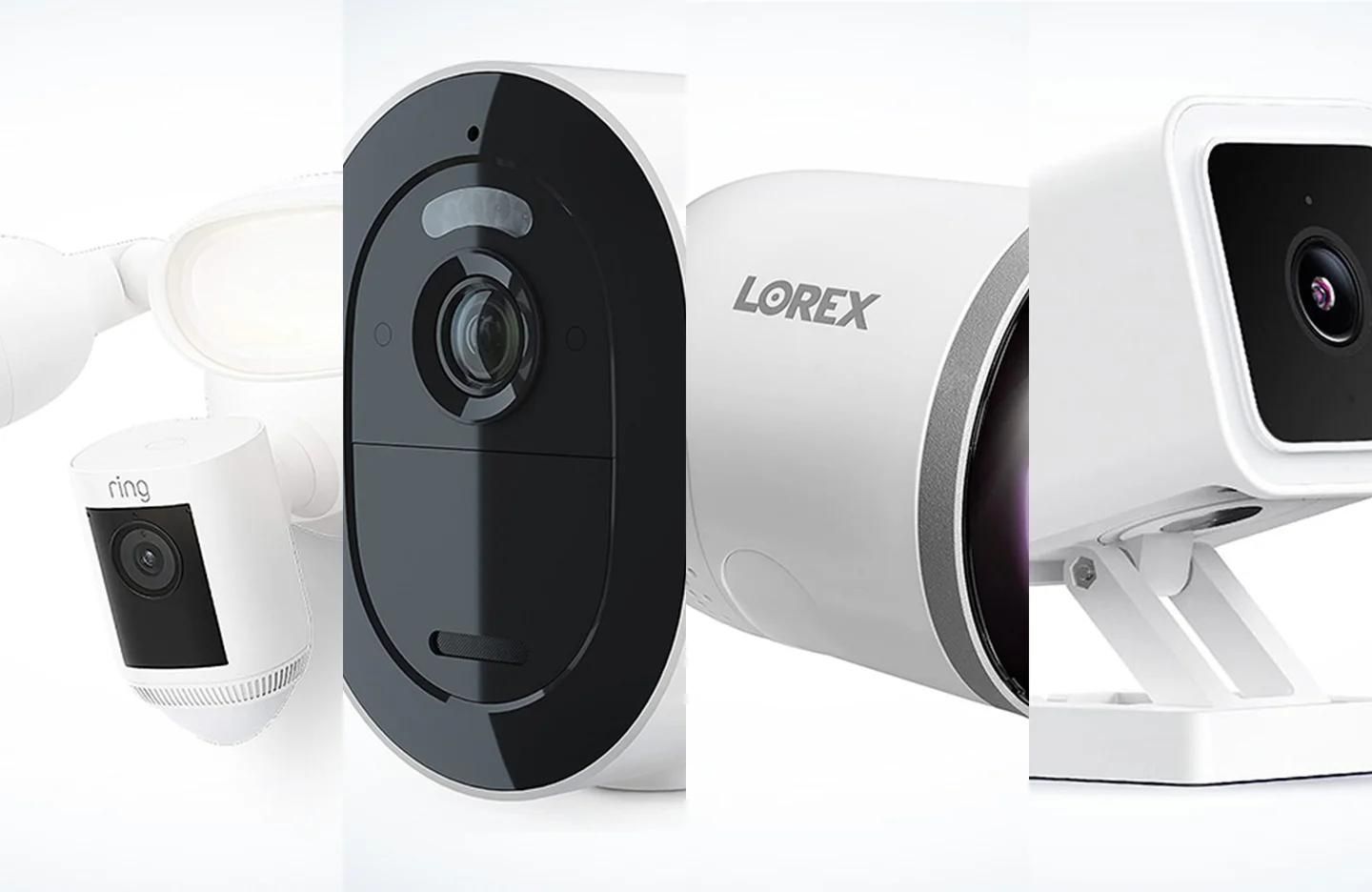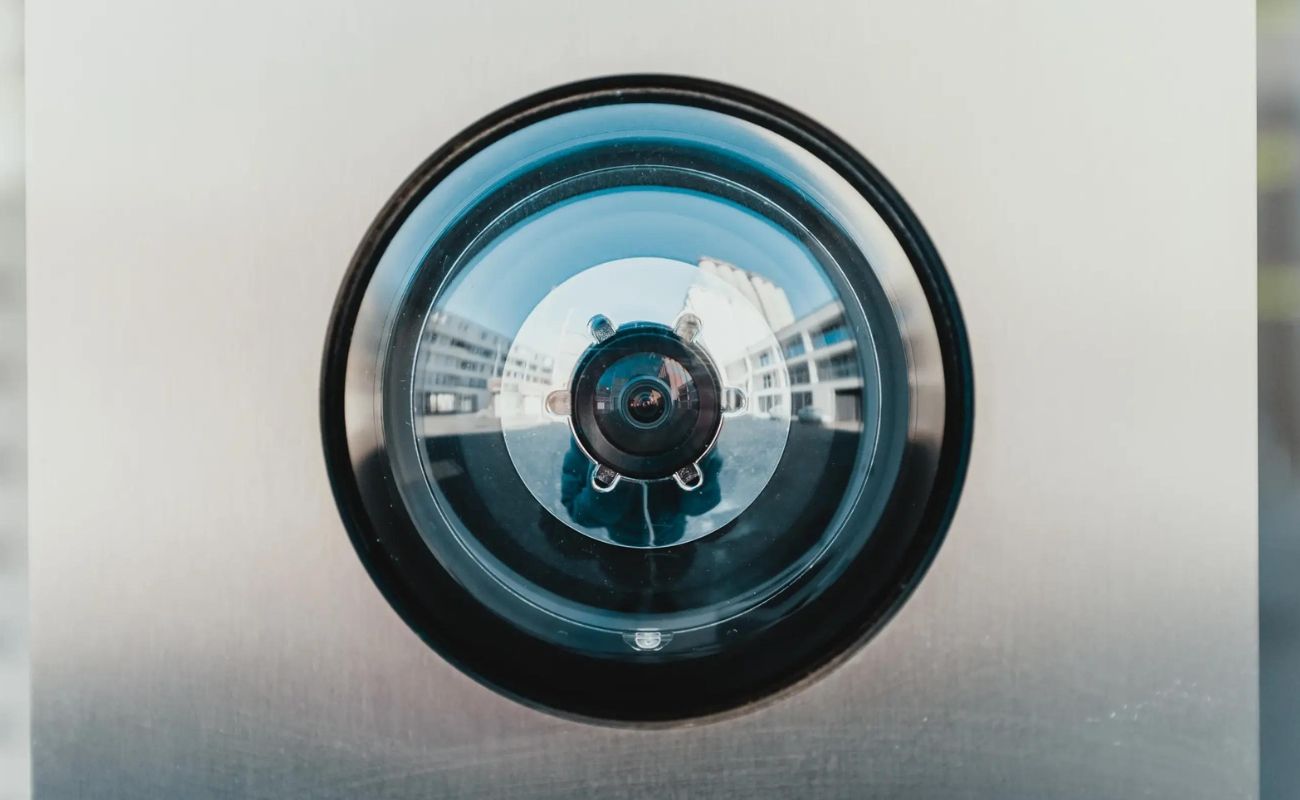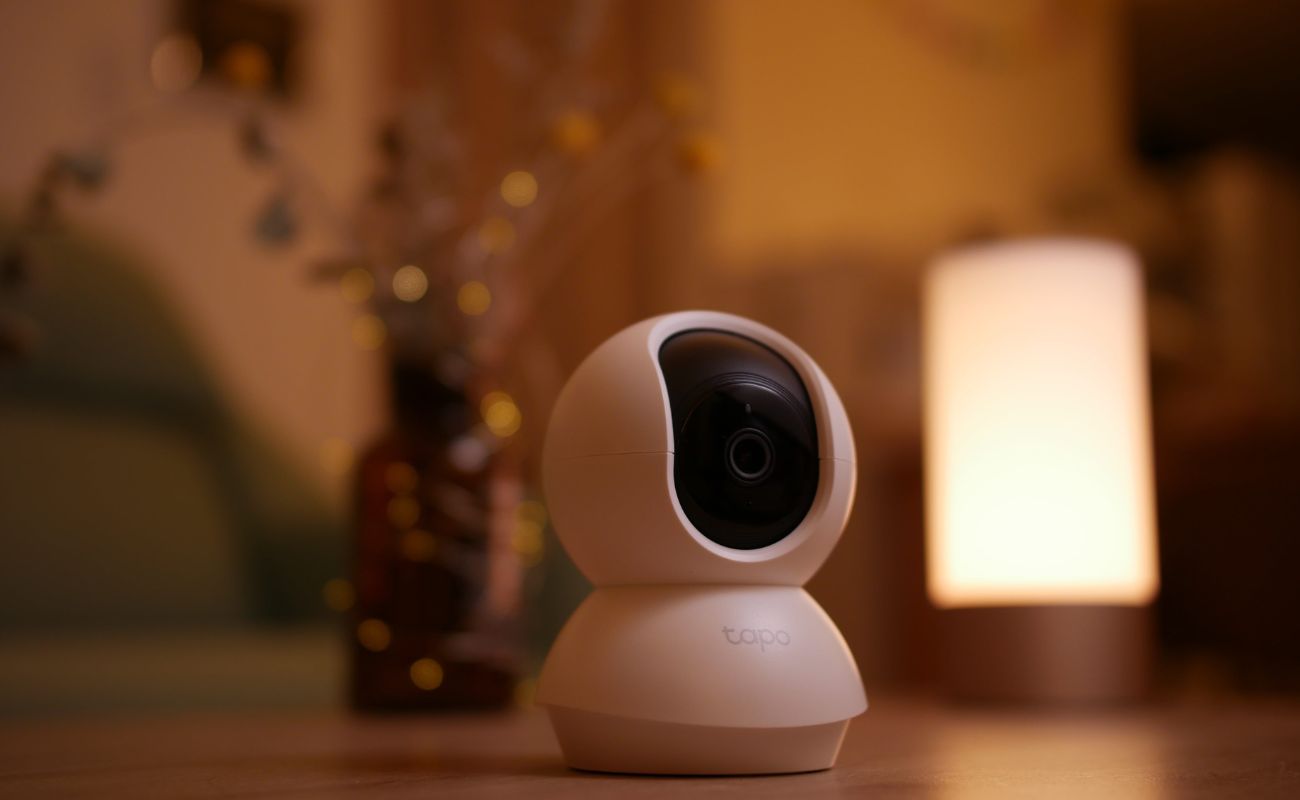Home>Home Security and Surveillance>What Is Your AT&T Wireless Security Passcode
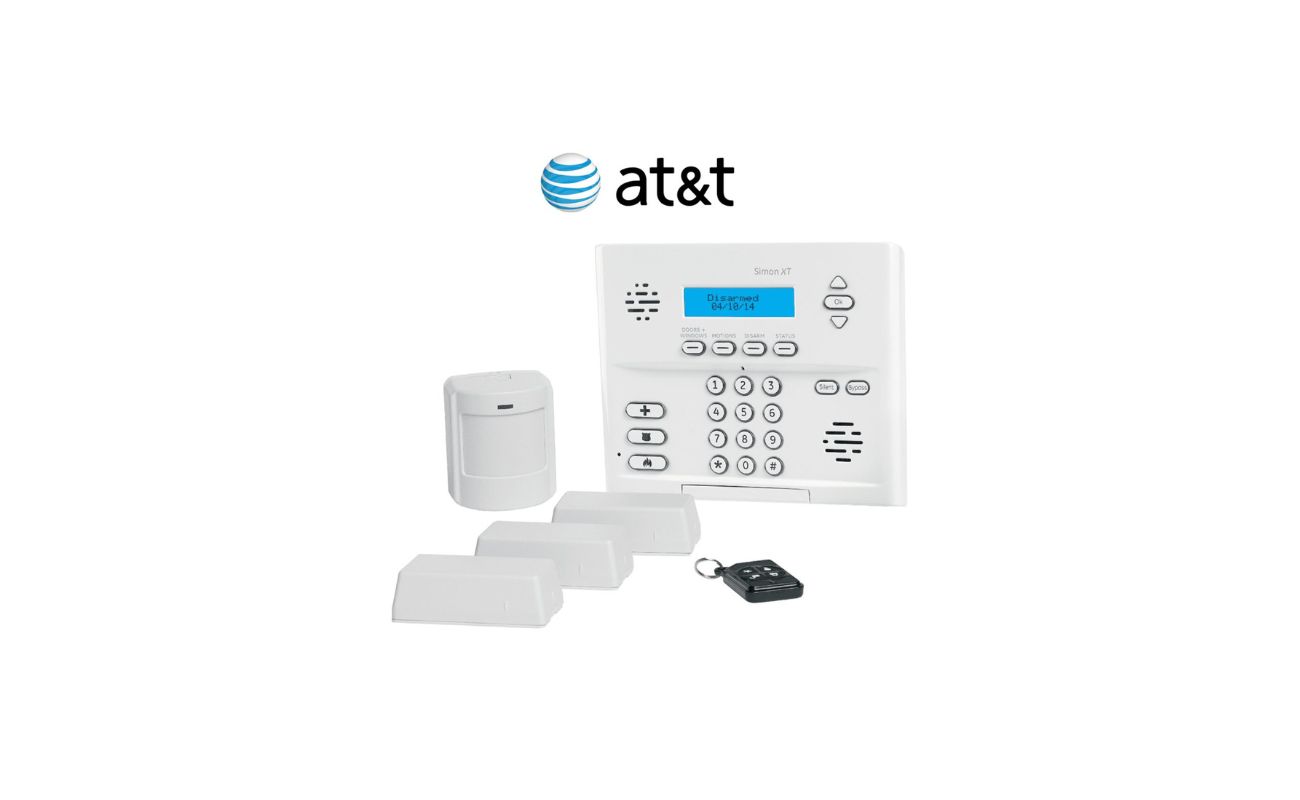

Home Security and Surveillance
What Is Your AT&T Wireless Security Passcode
Modified: September 1, 2024
Protect your home with AT&T Wireless. Set up a secure passcode for your home security and surveillance system to keep your loved ones safe.
(Many of the links in this article redirect to a specific reviewed product. Your purchase of these products through affiliate links helps to generate commission for Storables.com, at no extra cost. Learn more)
Introduction
Welcome to the world of AT&T wireless security passcodes! In today’s digital age, where our lives are increasingly intertwined with technology, it has become essential to prioritize our online security. This extends to our wireless networks, which are often susceptible to unauthorized access and potential security breaches.
AT&T, a leading telecommunications provider, understands the importance of maintaining a secure wireless connection. To safeguard their customers’ data and privacy, AT&T has implemented a robust system of wireless security passcodes. In this article, we will dive deep into the intricacies of AT&T wireless security passcodes, their different types, and the steps involved in creating, changing, and recovering them.
With the rapid expansion of wireless technology, the need for secure passcodes has never been more crucial. Hackers and cybercriminals are constantly on the lookout for vulnerable networks to exploit. By establishing a strong AT&T wireless security passcode, you can protect your personal and sensitive information from unauthorized access, ensuring the privacy and integrity of your wireless network.
Whether you are a residential customer or a business owner, understanding the importance of AT&T wireless security passcodes is paramount to your online safety. Without further delay, let us explore the different types of passcodes provided by AT&T and learn how to strengthen the security of your wireless network.
Key Takeaways:
- Protect Your Data
Securing your AT&T wireless network with a strong passcode safeguards your personal information, prevents unauthorized usage, and defends against cyber attacks, ensuring the privacy and integrity of your data. - Stay Vigilant
Regularly update and change your passcode, avoid sharing it with unauthorized individuals, and utilize additional security features to enhance the protection of your AT&T wireless network.
Importance of AT&T Wireless Security Passcode
In today’s interconnected world, the importance of securing your AT&T wireless network cannot be emphasized enough. With the ever-increasing number of devices connected to the internet, including smartphones, tablets, smart TVs, and even household appliances, it has become easier for malicious individuals to gain unauthorized access and compromise your personal information.
Here are a few reasons why having a strong AT&T wireless security passcode is crucial:
- Data Protection: A secure passcode ensures that only authorized users can access your wireless network. This prevents hackers and intruders from intercepting sensitive data, such as your personal information, financial details, and confidential business files. By securing your network, you give yourself peace of mind knowing that your data is protected.
- Preventing Unauthorized Usage: Without a passcode, anyone within range of your wireless network can connect to it and potentially consume your bandwidth, slowing down your connection speed and leading to increased data usage. By having a secure passcode, you can restrict access to your network and ensure that only trusted individuals can use it.
- Protection Against Cyber Attacks: A weak or nonexistent wireless security passcode exposes your network to various cyber threats, such as malware, phishing attempts, and denial-of-service attacks. These attacks can compromise your devices, steal your personal information, and disrupt your online activities. By implementing a strong passcode, you create an additional layer of protection against such attacks.
- Compliance with Network Provider Policies: AT&T, like other network providers, requires its users to secure their wireless networks to maintain the overall integrity and security of their infrastructure. Failure to comply with these policies may result in penalties or restrictions on your network access.
- Protection of Personal Privacy: A secured wireless network ensures that your online activities remain private. Without a passcode, others may be able to monitor your internet usage, collect personal data, or even track your online movements. By using a strong AT&T wireless security passcode, you safeguard your privacy and maintain control over your internet experience.
Overall, implementing a strong AT&T wireless security passcode is essential for maintaining the security, privacy, and integrity of your network. It helps to protect your sensitive data, prevent unauthorized usage, defend against cyber attacks, adhere to network provider policies, and preserve your personal privacy. In the following sections, we will explore the different types of AT&T wireless security passcodes and guide you through the steps of creating, changing, and recovering them.
Types of AT&T Wireless Security Passcodes
When it comes to securing your AT&T wireless network, there are different types of security passcodes to choose from. Each type offers its own level of protection and encryption. Let’s explore the different types of AT&T wireless security passcodes:
- WEP (Wired Equivalent Privacy): WEP was the first wireless security protocol introduced in the late 1990s. However, it is now considered outdated and less secure. WEP uses a static 10 or 26 character alphanumeric passcode, which can be easily hacked or brute-forced. It is recommended to avoid using WEP security passcodes and opt for more secure alternatives.
- WPA (Wi-Fi Protected Access): WPA is an improved version of WEP and offers stronger encryption. Initially, WPA used a pre-shared key (PSK) passcode, commonly known as WPA-PSK. It requires a passphrase (typically 8 or more characters) that is shared between users and devices accessing the network. However, with advances in technology, WPA-PSK can also be vulnerable to brute-force attacks. It is recommended to use more advanced versions of WPA for enhanced security.
- WPA2 (Wi-Fi Protected Access 2): WPA2 is the current industry standard for wireless security and provides enhanced encryption compared to WPA. It is available in two versions: WPA2-PSK (Pre-Shared Key) and WPA2-Enterprise. WPA2-PSK uses a strong passphrase that is shared between devices, similar to WPA-PSK. WPA2-Enterprise, on the other hand, requires the use of an authentication server and individual usernames and passwords for each device connecting to the network, making it more suitable for enterprise-level networks.
- WPA3 (Wi-Fi Protected Access 3): WPA3 is the latest and most advanced wireless security protocol. It provides enhanced security features and better protection against various types of attacks. WPA3 supports both WPA3-Personal and WPA3-Enterprise. WPA3-Personal uses Simultaneous Authentication of Equals (SAE) protocol, which provides stronger protection against offline dictionary attacks. WPA3-Enterprise, similar to WPA2-Enterprise, requires an authentication server and individual credentials for each device.
When choosing an AT&T wireless security passcode, it is recommended to use either WPA2 or WPA3 for optimal protection. These protocols offer stronger encryption and security mechanisms compared to WEP and older versions of WPA.
Now that we have explored the different types of AT&T wireless security passcodes, let’s proceed to the next section, where we will learn how to create a personal passcode for your wireless network.
Creating a Personal AT&T Wireless Security Passcode
Creating a strong and secure AT&T wireless security passcode is essential to protect your network and ensure the privacy of your data. Follow these steps to create a personal passcode for your AT&T wireless network:
- Access your router settings: To begin, you need to access your router’s settings. Open a web browser on a device connected to your AT&T wireless network and enter the router’s IP address (usually 192.168.1.254 or 192.168.0.1) in the address bar. This will take you to the router’s configuration page.
- Login to your router: On the router’s login page, enter the username and password. By default, the username is often “admin,” and the password is either “password” or “admin.” If you have changed the login credentials in the past, use the updated username and password.
- Navigate to wireless settings: Once logged in, navigate to the wireless settings section. The exact location of this option may vary depending on the router model, but it is typically found under the “Wireless” or “Wireless Settings” tab.
- Select network security: Look for the security settings option. Here, you can choose the type of security protocol for your wireless network. Select either WPA2 or WPA3 for the highest level of security.
- Create your passcode: Locate the field where you can enter your passcode. It may be labeled as “Passkey,” “Passphrase,” or “Password.” Ideally, your passcode should be at least 12 characters long and include a combination of uppercase and lowercase letters, numbers, and special characters. Avoid using common words or personal information that can be easily guessed.
- Save the changes: After entering your passcode, click on the “Save” or “Apply” button to save the changes. Your router will then restart, implementing the new passcode for your AT&T wireless network.
Congratulations! You have successfully created a personal AT&T wireless security passcode for your network. Remember to update the passcode periodically and avoid sharing it with unauthorized individuals.
Now that you have a strong passcode in place, let’s move on to the next section to learn about changing an AT&T wireless security passcode.
Always create a unique and strong passcode for your AT&T wireless account. Avoid using easily guessable information like birthdays or sequential numbers. Keep your passcode confidential and update it regularly for added security.
Changing an AT&T Wireless Security Passcode
Changing your AT&T wireless security passcode on a regular basis is an important step in maintaining the security of your network. Follow these simple steps to change your AT&T wireless security passcode:
- Access your router settings: Similar to creating a passcode, you need to access your router’s settings. Open a web browser on a device connected to your AT&T wireless network and enter the router’s IP address (usually 192.168.1.254 or 192.168.0.1) in the address bar.
- Login to your router: Enter the username and password to log in to your router’s configuration page. If you have changed the login credentials in the past, use the updated username and password. If you are unsure, refer to the router’s manual or contact AT&T customer support for assistance.
- Navigate to wireless settings: Once logged in, locate the wireless settings section. It is typically found under the “Wireless” or “Wireless Settings” tab.
- Find the security settings: Look for the security settings option. Here, you can view and edit the current security protocol and passcode for your wireless network.
- Change the passcode: Enter your new desired passcode in the appropriate field. Make sure to use a strong and unique combination of characters, including uppercase and lowercase letters, numbers, and special characters.
- Save the changes: After entering the new passcode, click on the “Save” or “Apply” button to save the changes. Your router will then restart, implementing the new passcode for your AT&T wireless network.
It is recommended to change your AT&T wireless security passcode periodically, such as every 3-6 months, to maintain the highest level of security. Additionally, if you suspect that your passcode has been compromised or shared with unauthorized individuals, it is important to change it immediately.
Now that you know how to change your AT&T wireless security passcode, let’s move on to the next section to learn about recovering a forgotten passcode.
Recovering a Forgotten AT&T Wireless Security Passcode
Forgetting your AT&T wireless security passcode can be frustrating, but fear not! You can recover a forgotten passcode by following these steps:
- Access your router settings: To begin, connect a device to your AT&T wireless network and open a web browser. Enter the router’s IP address (usually 192.168.1.254 or 192.168.0.1) in the address bar to access the router’s configuration page.
- Login to your router: Enter the username and password to log in to your router’s configuration page. If you have never changed the login credentials, use the default username and password provided by the router manufacturer. If you have changed them but cannot remember, refer to the router’s manual or contact AT&T customer support for assistance.
- Navigate to wireless settings: Once logged in, locate the wireless settings section. It is typically found under the “Wireless” or “Wireless Settings” tab.
- View the current passcode: Look for the security settings option. Here, you should be able to view the current passcode for your AT&T wireless network. If the passcode is displayed as a series of dots or asterisks, there might be an option to reveal the actual passcode. Click on this option to reveal the passcode.
- Reset the passcode: If you are unable to view the current passcode or if it doesn’t work, you can reset the passcode to a new one. Look for the option to reset or change the passcode and follow the prompts to enter a new passcode.
- Save the changes: After entering the new passcode, click on the “Save” or “Apply” button to save the changes. Your router will then restart, implementing the new passcode for your AT&T wireless network.
If you encounter difficulties or need further assistance in recovering a forgotten AT&T wireless security passcode, you can reach out to AT&T customer support for guidance. They have dedicated support teams available to assist you in resolving any issues related to your AT&T wireless network and passcode recovery.
Remember to store your passcode in a safe and secure location to avoid forgetting it in the future. Additionally, periodically update and change your passcode to ensure the continued security and integrity of your AT&T wireless network.
Now that you know how to recover a forgotten AT&T wireless security passcode, let’s proceed to the next section to learn some tips for maintaining the security of your passcode.
Tips for Maintaining the Security of Your AT&T Wireless Passcode
Securing your AT&T wireless passcode is essential to protect your network and data. Here are some valuable tips to help you maintain the security of your AT&T wireless passcode:
- Use a strong passcode: Create a passcode that is at least 12 characters long and includes a combination of uppercase and lowercase letters, numbers, and special characters. Avoid using common words, personal information, or easily guessable patterns.
- Change your passcode regularly: Regularly change your AT&T wireless passcode, ideally every 3-6 months. This reduces the risk of someone guessing or cracking your passcode and helps maintain the security of your network.
- Avoid sharing your passcode: Only share your passcode with trusted individuals who need access to your network. Be cautious with who you provide the passcode to, as giving it to unauthorized users can compromise the security of your network.
- Keep your passcode private: Be cautious about entering your passcode in public places or around individuals you do not trust. Avoid displaying your passcode to others, as someone may try to gain unauthorized access to your network.
- Secure your router: Change the default login credentials for your router’s configuration page to prevent unauthorized access. Use a strong username and password combination that is different from your wireless passcode.
- Enable network encryption: Ensure that your AT&T wireless network is encrypted using WPA2 or WPA3. Encryption adds an extra layer of security and prevents unauthorized individuals from intercepting your data.
- Disable remote administration: Disable the remote administration feature on your router to minimize the risk of unauthorized access. This prevents anyone from accessing your router’s settings remotely.
- Regularly update your router’s firmware: Check for firmware updates for your router and install them regularly. Firmware updates often include security patches and fixes, keeping your router protected against the latest threats.
- Use additional security features: Explore and enable any additional security features provided by your router, such as firewall settings, MAC address filtering, or guest network options. These features further enhance the security of your wireless network.
- Monitor connected devices: Regularly review the list of connected devices on your router’s settings page. If you notice any unfamiliar or suspicious devices, investigate and take appropriate action to ensure the security of your network.
By following these tips, you can significantly enhance the security of your AT&T wireless passcode and protect your network from unauthorized access and potential cyber threats.
Now that you have learned how to maintain the security of your AT&T wireless passcode, let’s conclude our article.
Conclusion
Securing your AT&T wireless network is of paramount importance in today’s digital landscape. With the increasing number of connected devices and potential security threats, having a strong and secure AT&T wireless security passcode is crucial to protect your personal information, maintain privacy, and prevent unauthorized access.
In this article, we delved into the world of AT&T wireless security passcodes, understanding the importance of implementing them for data protection, preventing unauthorized usage, and guarding against cyber attacks. We explored the different types of AT&T wireless security passcodes, including WEP, WPA, WPA2, and WPA3, highlighting the need to choose the most secure option for your network.
We also learned the steps involved in creating a personal AT&T wireless security passcode, changing it periodically to maintain security, and recovering a forgotten passcode in case of emergencies. By following these guidelines, you can strengthen the security of your AT&T wireless network and safeguard your personal information.
To further enhance the security of your AT&T wireless passcode, we provided valuable tips, including using a strong passcode, changing it regularly, avoiding sharing it with unauthorized individuals, securing your router, and enabling additional security features. These measures will help protect your network from potential threats and maintain the integrity of your wireless connection.
Remember, maintaining the security of your AT&T wireless network is an ongoing process. Stay vigilant, keep your network and devices updated with the latest security patches, and review your network settings periodically to ensure optimal protection.
In conclusion, protecting your AT&T wireless network with a strong security passcode is essential in today’s interconnected world. By following the steps and tips outlined in this article, you can maintain the security, privacy, and integrity of your network, allowing you to enjoy a seamless and safe online experience.
Take the necessary steps today to strengthen the security of your AT&T wireless network. Your data and peace of mind are worth it.
Frequently Asked Questions about What Is Your AT&T Wireless Security Passcode
Was this page helpful?
At Storables.com, we guarantee accurate and reliable information. Our content, validated by Expert Board Contributors, is crafted following stringent Editorial Policies. We're committed to providing you with well-researched, expert-backed insights for all your informational needs.

